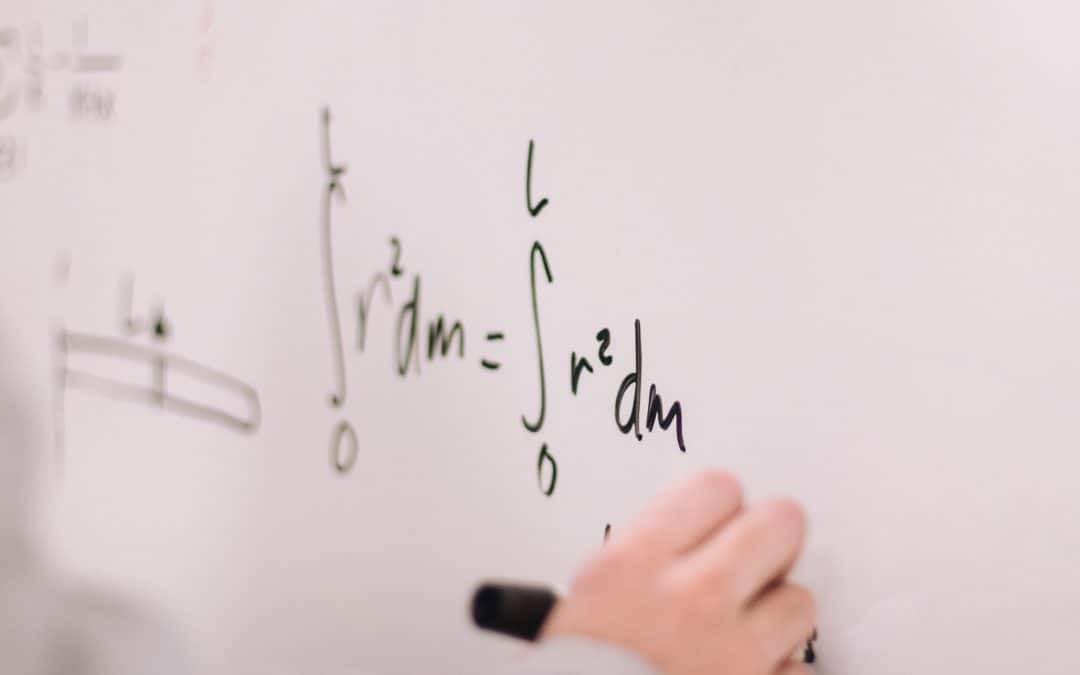The SAT’s Math Section is a little notorious for it’s tricky questions. No worries. Here are the six most common SAT Math mistakes and how to avoid them.
1. Simple Mistakes
You drop a variable, mis-add something, or make one of those small, itty-bitty mistakes that have you screaming in frustration when you find the tiny thing you did wrong. How do you reduce these?
Write out your work. Every step. Trying to do the math in your head might seem faster, but it more often than not leads to you trying to keep track of too many numbers and forgetting something. Write everything out. Turns out, you can simplify things quicker when it’s on the page in front of you. It also makes diagnosing these small mistakes easier because you can see exactly where you dropped a variable or added instead of subtracted. It’s good when you’re practicing as well as on test day.
2. Negatives
One of the most common SAT math mistakes is getting a negative sign mixed up. Always double check your positive/negative signs. If you see a negative number ready to be distributed or moved, take the time to do it right instead of making a stupid mistake.
3. Distributing/Factoring
Part-way multiplying across an expression in parenthesis is an incredibly common mistake. Make sure you distribute across all contents inside a parenthesis. If you’re multiplying two polynomials, make sure you fully foil them out. Draw lines, mark them off, whatever you need to do to make sure you remember is worth it. Likewise, when factoring, make sure you factor everything.
Remember, the graders aren’t judging you on how neat your work is, what your work just has to help you.
3. Combining Variables of Different Powers
You can’t combine X and X squared, but that doesn’t stop people from trying. Make sure you keep your exponents intact and don’t combine variables willy nilly. Write the equations out each time you combine something, or you run the risk of making a silly mistake.
4. Finding X instead of Y
Sometimes, a question will ask you for something that requires you to find something else first, and by the time you find the first thing, you’re ready to call that the answer, and not feed it through the last thing that you need to find the answer. Before you answer a question with several variables involved, quickly check that your answer is the value they’re looking for, and that you aren’t giving the width when they’ve asked for the height.
5. Oddly-Scaled Graphs
Sometimes, graphs on the SAT don’t use the same scale for the y axis that they use for the x axis. So if you’re trying to find the slope by counting squares, it’ll be off. Always calculate the slope from the actual numbers on the graph. Don’t take shortcuts.
6. Misunderstanding The Question
The SAT is full of slightly confusing word problems. There are a couple ways to sort things out. First, ask yourself: what do they want? Ignore what they give you for a moment to see if a simpler way to the answer presents itself. If you can’t think of a way to solve the question, ask yourself: what are they testing me on? That can occasionally present a good way forward.
Two of the most common questions that have unfamiliar wording are the “no solutions” and “infinite solution” equations questions. Essentially, they give you two equations for lines, with an A switched out for a constant, and asked what that A has to be if the line has “no solutions.” If two lines that can be graphed have “no solutions,” then they never cross. They’re parallel lines, so you need to find what A has to be to make the two lines be parallel. If two lines have “infinite solutions” then they are essentially the same line. So you find what A would have to be to make the two equations be describing the same line. For more tips like this, check out our SAT Math Mastery guides.
***
That’s all! Now go find time to study for the SAT! If you want more SAT and ACT prep advice sure to join our mailing list for a free 27-item checklist and 30-day free SAT email course.
